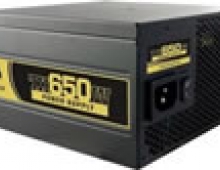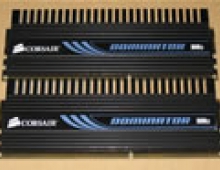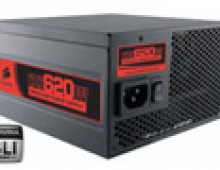Gaming Performance Analysis - 4GB vs. 2GB
1. Introduction
Review Pages
2. Windows Vista 32bit - 3DMark 05/06/Vantage, Company Of Heroes v1.71, Half Life 2 Episode 2
3. Windows Vista 32bit - Crysis WarHead v1.00
4. Windows Vista 32bit - Far Cry 2
5. Windows Vista 64bit - 3DMark 05/06/Vantage, Company Of Heroes v1.71, Half Life 2 Episode 2
6. Windows Vista 64bit - Crysis WarHead v1.00
7. Windows Vista 64bit - Far Cry 2
8. Conclusion
There has been a long debate about whether increasing the 2GB to 4GB actually improves the gaming experience that users will see from today's latest gaming titles. Today we will examine what users can expect from an upgrade from a 2GB to 4GB (DDR2), especially under VISTA operating system.
Corsair has already published a study where it shows the benefits of moving from 2->4GB under Vista 64bit Premium edition. In our tests, we have added the VISTA 32bit Premium edition. Before proceeding to the test results, let's see some background of the 2 vs. 4GB debate.
First of all, the 32bit operating systems partially recognize the 4GB of the installed memory.
Due to differences in the way that 32-bit and 64-bit operating systems work , 4GB of system memory is most efficiently used in conjunction with a 64-bit operating system. Users with 32-bit versions of Windows will still be able to access up to 3.5GB of available memory, which is up to a 75% increase compared to 2GB.
This is explained if you think of the differences in the way that 32-bit and 64-bit operating systems work:
Each binary bit in a 32-bit operating system can be used to represent the location of a byte of memory, a 32-bit operating system has a maximum ‘memory address size’ of 232 bytes, which equates to 4,294,967,296 bytes (4,096MB or 4GB). However, part of this 4GB ‘address space’ must be reserved for devices that require MMIO (Memory-Mapped Input Output). In simple terms MMIO is a process by which some devices in the PC exchange data with the CPU/memory. One such device is the graphics card, which requires an amount of address space equal to its frame buffer size (the amount of memory installed on the card) to be ‘reserved’ for such data exchanges. This reserved address space is therefore not available to Windows as accessible memory. This means that the total number of useable memory available to Windows is decreased.
On the other hand, under 64-bit operating systems, with 64-bits available to represent the locations of bytes of memory the maximum theoretical memory address size increases to 264 bytes, which equates to 16TB (terabytes) or 16,384GB. In reality the 64-bit versions of Windows Vista support 8 – 128GB+.
Therefore, for 64-bit systems, the address ranges for devices that require Memory Mapped Input Output can be set well above the 4GB address line.
In summary, a 64-bit system with a 64-bit version of Windows Vista or XP will be able to utilize the full 4GB of installed memory. Users with a 32-bit operating system will also see an increase in useable memory of up to 75%. Microsoft indicates the requirements of getting "advantage" of the 4GB under Windows VISTA 32bit.
So both SP1 of VISTA 32bit and SP3 of Windows XP indicate that the system has 4GB of memory installed, but in reality the most you will see in applications/games is around 3.5GB.
For this test, Corsair provided us with two memory sets, the XMS2 DHX 2x1GB and the XMS2 DHX 2x2GB. Both memory modules are identical and have similar specifications (CL4@800MHz).

It would be interesting to see whether there are any performance improvements after moving from 2GB to 4GB either under VISTA 32bit & 64bit Premium Editions.

Moreover, we installed an additional set of 4GB memory modules in some tests in order to see how our VISTA 64bit Premium edition system performs with a total of 8GB memory installed.

What we tested
The focus of this test is to assess the performance impact on modern games of upgrading from 2GB of memory to 4GB of memory.
We used typical 3D graphics and game benchmarks as well as real-world benchmarking approach by playing a repeatable section of several games and recording the average and minimum frame rates.
Test Platform
To compare the performance of 4GB and 2GB memory sizes we used the following test system:
- CPU: Intel E8600 Retail
- CPU Cooler: Scythe Mugen
- Case: Open case testing
- Motherboard: Asus Striker II Extreme Bios 0901
- PSU: Corsair HX620W
- HDD: WD 80JB
- Operating systems:
- Windows Vista SP1 32bit with all the latest updates installed
- Windows Vista SP1 64bit with all the latest updates installed
- VGA: XFX 260GTX XXX
- VGA Driver: Nvidia Forceware 180.04 for VISTA 32bit/64bit
- VGA Driver Settings: High Quality, all the rest settings default
- Additional software: Fraps (www.fraps.com)
Review Pages
2. Windows Vista 32bit - 3DMark 05/06/Vantage, Company Of Heroes v1.71, Half Life 2 Episode 2
3. Windows Vista 32bit - Crysis WarHead v1.00
4. Windows Vista 32bit - Far Cry 2
5. Windows Vista 64bit - 3DMark 05/06/Vantage, Company Of Heroes v1.71, Half Life 2 Episode 2
6. Windows Vista 64bit - Crysis WarHead v1.00
7. Windows Vista 64bit - Far Cry 2
8. Conclusion





















